Keir Leslie – 12 November, 2013
It is hard to tell what criteria were adopted by the selection panel for inclusion. The catalogue talks about “showcasing the best, most stimulating, most inventive examples”. But how that very broad approach translates into the specific decisions made in composing the show is hard to tell. It is noticeable that painting makes up over a third of the show, while nowhere near a third of the art school consists of painters.
Select is the annual exhibition of selected works by graduating students of the Ilam School of Fine Arts, those included this time being Barry/Holly, Ietje Beets, Kezia Fairbrother, Jon Jeet, Kate Matson, Stephanie McEwin, Alyson O’Malley, Elle Plank, George Pope, Meg Porteous, Ashlee Simeon, Eleanor Taylor, Clara Wells and Claudia Wood.
The premise of the show is that all graduating students are eligible to enter work. A selection is made from the entries by a panel, and from that selection three are chosen by a guest judge (this year Lara Strongman) to be purchased by the University. Now in its sixth edition, and recently imitated by Elam, this exhibition is a chance for graduates to begin to position themselves as artists, and not just as students. It also offers a substantial cash prize, which is important as artists begin to function within a world where they need to generate a sustainable practice.
This in-betweenness, where exhibitors are both student and artist, is an important aspect of Select. It is a show that offers support in that transition, and it is a valuable part of the professional infrastructure for early career artists in Christchurch, especially considering the absence of any reputable dealer galleries picking up younger artists in Christchurch at present.
As always, the show is a mixed bag. Given the constraints of the premise, there is little chance of a tight, well-argued show, and inevitably, some work is more successful than others. Select does not attempt to impose a visible curatorial logic on the works, and the catalogue consists of a fairly generic foreword by the Arts Acquisitions Committee, followed by a sequence of images of works (some of which are in fact details and should be noted as such) accompanied by short statements by the artists.
I would expect graduating students to be able to phrase clear and considered artist statements that complement and do not detract from the work. Many of the artists are able to do so, but a concerning number are not. Artists have a legitimate expectation that their work can speak for itself, but that also means they must be able to write texts that allow the work to function. Control over the textual components of an exhibition is a key professional skill.
It is hard to tell what criteria were adopted by the selection panel for inclusion. The catalogue talks about “showcasing the best, most stimulating, most inventive examples”. But how that very broad approach translates into the specific decisions made in composing the show is hard to tell. It is noticeable that painting makes up over a third of the show, while nowhere near a third of the art school consists of painters. I would like to see more clarity and rigour underpinning the selection, and perhaps an attempt by the panel to articulate that decision-making process. In particular, I would suggest that selecting for ‘the best, the most stimulating, and the most inventive’ privileges certain kinds of practice over others: how does Select handle artists who are not interested in being the ‘best’, or are perhaps investigating the repetitive, unoriginal, and the boring?
Putting aside those curatorial critiques, the works themselves are predominantly assured and controlled. They are, as should be expected, products of a sophisticated visual education. Some are, sadly, lacking a corresponding conceptual sophistication.
Two photographs in particular stand out as mature, considered work operating successfully on both formal and conceptual levels. Kezia Fairbrother’s Bus Stop draws upon an investigative, documentary impulse, charged with moral fervor, filtered through a cool sensibility reminiscent of the work of Edward Hopper, Jeff Wall, or perhaps the large-scale constructed images of Heather Straka. Meg Porteous’ All Inclusive stands out for me as a highly resolved image. An overly tanned middle aged man faces into a sea breeze. Garish oranges and yellows, acid blues and compositional rigidity recall boring postcards, or maybe holiday snaps of a certain era. The preoccupation with the effects of tonal balance could be related to Instagram’s filter-obsession.
Ashlee Simeon’s Reflected Light continues ongoing research into the materiality of salt and copper. A small, hand-beaten copper bowl encrusted in salt crystals, it rests on a narrow stand. Drawing, maybe, on a tradition of Joseph Beuys via Andrew Drummond, this work is a product of a lengthy gestation, having spent most of the year sitting in Simeon’s studio, engaging with and altering the atmosphere of the place as the salt crystals formed and the copper tarnished.
This year, three animations are included. Two are by design students, and display a playful gaming of the conventions of the art school. Tagalong Road: Dance Dog is presented by the “Barry/Holly Initiative”, a collaboration of two fourth year designers. Harshly coloured and clumsily put together, the Initiative apparently expected and received a reaction of “indifference and slight confusion/disquietment” when they showed the work in the South City mall. Elle Plank’s Established Existence explores the narrow world of the studio desk, culminating in an orgy of shredded, razored paper drifting across the work surface. Clara Wells’ Untitled No. 1 situates itself with reference to the work of Len Lye, exploring questions of movement and duration in film. A black and white sequence, Wells’ line quality and handling of texture are excellent. It also has a nice circular referentiality, recalling the scratch films Ilam students are expected to produce in first year.
The announcement of the winners will be made on the 13th of November, coinciding with the School’s open day. Apart from the sporting interest in seeing who walks off with the prizes, it will be an opportunity to place Select within the context of the broader art school, at a point where the institution is confronting a need for change.
Keir Leslie
Recent Comments
Owen Pratt
Hey jon, good on you for winning a prize or whatever. Pity you can't take the borax though. A word: ...
Alice Tappenden
Have a look at this article on the 20 most powerless people in the art world, featuring not just critics, ...
Robin Neate
Congratulations Jon Jeet on your winning entry. You may now realise that in the final analysis the artist’s work is ...
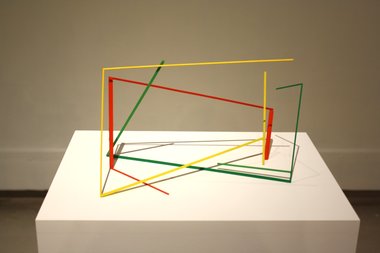

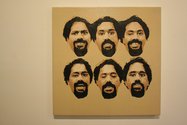
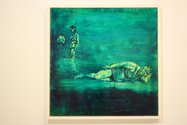
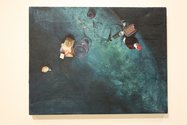
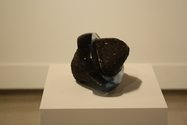
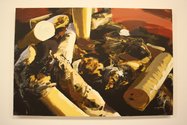

 Advertising in this column
Advertising in this column Two Rooms presents a program of residencies and projects
Two Rooms presents a program of residencies and projects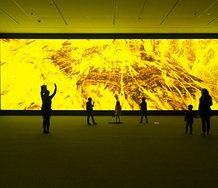
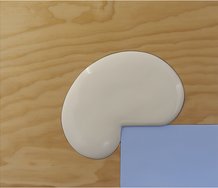
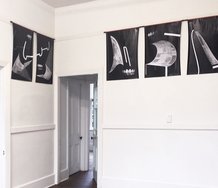
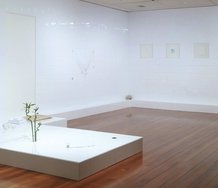
This Discussion has 9 comments.
Comment
jon jeet, 10:42 p.m. 12 November, 2013 #
It's not hard to see that the writer has a bias attitude as to who he writes about.
I shan't speak of the painters as they are like a virus, overly represented at Ilam.
Am I to feel honoured there in being selected?
Can I question as to whether the select panel did their job?
Is the writer implying I should question whether I should be proud?
Shame on you for killing my buzz.
Robin Neate, 9:57 p.m. 14 November, 2013 #
Congratulations Jon Jeet on your winning entry. You may now realise that in the final analysis the artist’s work is always more powerful than any critic’s opinion. Your work is now for perpetuity part of the University’s art collection and the historical record. Regain your buzz in the knowledge that art history rarely remembers the critic and when it does its only to ridicule.
Owen Pratt, 10:17 p.m. 22 November, 2013 #
Hey jon, good on you for winning a prize or whatever. Pity you can't take the borax though. A word: if you don't like harsh things said about you then don't call painters, viruses.
Chloe Geoghegan, 12:52 p.m. 13 November, 2013 #
Thank you Keir for providing us with an interesting critical review of this show. I am looking forward to seeing the works myself at the opening.
As for the comment above, you are responsible for maintaining your own buzz Jon Jeet, you should not be relying on external reviews and critics to pat you on the back every time you make some art. You can get a handshake when you pick up your diploma at graduation.
Reviewers of course are allowed to be biased, that's called thought / expression. That's the whole point, and the readers are eager to find out what the bias is for this particular reviewer.
This comment further emphasises the reviewer's final line.
Hope I didn't kill your buzz.
jon jeet, 2:52 p.m. 13 November, 2013 #
It really did,now 2 of u have my buzz
Can't take this rejection
Chloe Geoghegan, 3:26 p.m. 13 November, 2013 #
The art world is a harsh place Jon, I wish you luck out there. "Constant acceptance breeds complacency and mediocrity. Rejection breeds determination and ultimate success." - Robert Wade
Alice Tappenden, 3:34 p.m. 15 November, 2013 #
Have a look at this article on the 20 most powerless people in the art world, featuring not just critics, but negative critics - they're sadly an endangered species in the majority of New Zealand's back-patting art criticism. It's a shame that Jon feels Keir killed his buzz, when in fact he said nothing negative about the work itself, but rather questioned the logic of a show over which Jon and the others had no control (again, refer to the list of the powerless; item #10: art students).
http://hyperallergic.com/92302/the-20-most-powerless-people-in-the-art-world-2013-edition/
Connie Blue, 1:37 p.m. 13 November, 2013 #
I agree, the competitive nature found in institutions can assist in the loss of consideration for the appreciation of works by a larger audience.
Ralph Paine, 1:17 p.m. 14 November, 2013 #
"And everyone's competing
for a love they won't receive
'cause what this palace wants
is release"
Participate
Register to Participate.
Sign in
Sign in to an existing account.